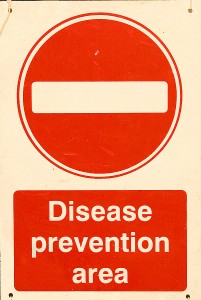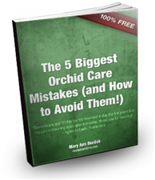 A fatal enemy of the orchids and one of the biggest problems of the orchid-caring community is virus. There are currently over 25 different kinds of infectious and deadly viruses all over the world. Two of the most of common viruses that affects orchids today are the Cymbidium Mosaic Virus (CyMV) and the Odontoglossum Ringspot Virus (ORSV).
A fatal enemy of the orchids and one of the biggest problems of the orchid-caring community is virus. There are currently over 25 different kinds of infectious and deadly viruses all over the world. Two of the most of common viruses that affects orchids today are the Cymbidium Mosaic Virus (CyMV) and the Odontoglossum Ringspot Virus (ORSV).
Search and Destroy
Once orchids are infected with these viruses, there is no hope. There is currently no cure developed to fight these viruses. There are some plant pathologists out there who are currently developing species of orchids that are immune to the said viruses. But until that day, affected plants must be immediately disposed of to avoid further infection of other plants. The best way to do this is by burning them.
If you suspect that some of the plants in your orchid collection might have been infected, do not hesitate to get some samples and have them tested. Find some plant pathology labs near you that could help you do this. There are also some orchid experts who do their own testing, find them and if they can, ask if they can teach you the basics in testing using commercial testing kits.
Avoid and Rescue
There is no sure way of telling that an orchid has a virus just by looking at them. Common symptoms are shared by fungal and viral infections such as black and brown spots. In time, orchids affected with viruses stop growing, will not bloom and eventually dies. The only definite way of telling is by testing.
One thing that can be done to prevent the spread of virus is BE CAUTIOUS. When using your hands or any garden tools, be sure to clean them thoroughly. Viral infection can be killed by using bleach solution when cleaning your tools. A suggested strength is 10%, from your pots to your cutting tools.
Viruses can be found everywhere, from the hand of a smoker to your regular garden tools. If you know a few tricks on how to avoid or reduce infection then somehow you can increase the chance of growing healthy orchids. Orchid care has no definite solution for viruses, until then be keen and always remember that prevention is the best route.
Have any other suggestions? Please leave a comment below.
To find out how to prevent other problems with your orchids, here are The 7 Biggest Orchid Care Mistakes.




Hi, I’m in love with my Orchids:) 🙂 I have a couple of questions. One of my plants have wonderful green leaves, but have oblong bumps on them. They seem healthy. Any suggestions??
Also, when one of my plants went to have flowers, I thought, It grew another plant. Not sure how long to leave it on the mother plant, or how to transplant. Would love some help 🙂 Thank you so much, Lynn
That’s wonderful! 🙂 I’m not sure what type of bumps you have? Check this out and see if they match. Here’s an article about the treatment of fungal and bacterial infections. Here is some information about dividing your plant. I hope all of this helps! Thanks! – Mary Ann